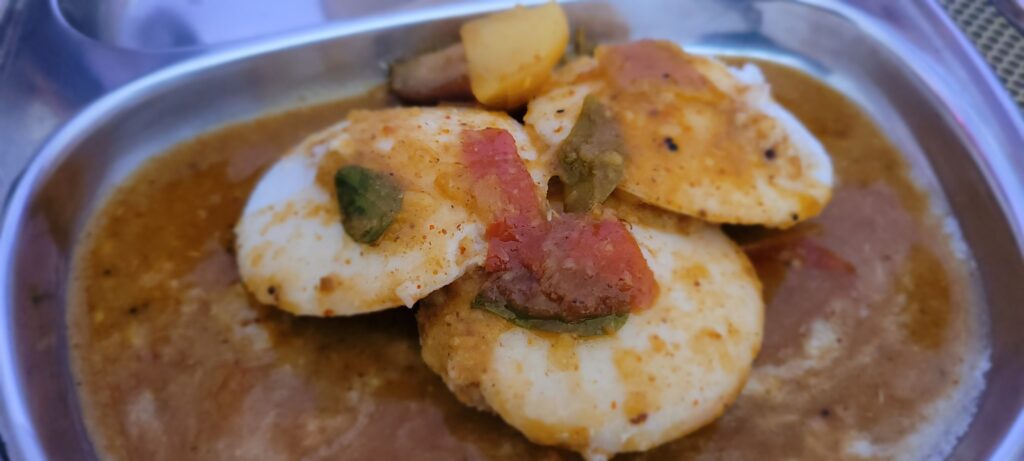📝 A Bite of Nostalgia: Why Idli Will Always Be Home
The aroma of steaming hot idlis transports me back to lazy Sunday mornings at my grandmother’s house. The kitchen would be filled with the comforting scent of fermented rice and lentils, mingling with the sizzling tempering of chutney and the earthy aroma of fresh coconut.
Idli was more than just breakfast—it was a ritual, a tradition, a warm hug on a plate.
As a child, I would sit cross-legged on the floor, watching my grandmother expertly ladle the fluffy white batter into the idli mold. She would tell me stories—of how idlis were once served on banana leaves in royal courts, how the perfect fermentation was an art, and how patience, much like in life, was the key to making the softest idlis.
Now, as I recreate her recipe in my own kitchen, I realize that idli is more than food—it’s a legacy, a story of love, simplicity, and nostalgia, steaming fresh with every batch.

💡 What You’ll Need to Make Authentic South Indian Idlis
- 2 cups idli rice (or parboiled rice)
- 1 ½ cups regular rice (optional – for added texture)
- 1 cup urad dal (split black gram)
- ½ teaspoon fenugreek seeds (methi)
- 1 teaspoon salt
- Water (as needed)
- Oil or ghee (for greasing idli molds)
🕰️ Soak with Patience: The First Step to Fluffy Idlis
- Wash the idli rice and urad dal separately under running water.
- Soak the rice in one bowl with enough water.
- Soak the urad dal and fenugreek seeds in another bowl.
- Let both soak for at least 6 hours or overnight for the best results.
🌀 Grind It Right: Getting That Smooth and Airy Batter
- Drain the water from the urad dal and grind it into a smooth, fluffy batter, adding water a little at a time.
- Then, grind the rice to a slightly coarse consistency.
- Mix both batters in a large bowl and stir well.
🌡️ Let It Rise: The Art of Idli Fermentation
- Cover the batter and leave it to ferment overnight in a warm place.
- The next morning, the batter should have risen, with a light, airy texture. Tip: If the weather is cold, keep the batter in the oven with the light on or near a warm stovetop.
🍽️ Steam and Serve: Bringing the Idlis to Life
- Add salt to the fermented batter and mix gently.
- Grease the idli molds with oil or ghee.
- Pour the batter into the molds, filling them ¾ full.
- Steam in an idli steamer or pressure cooker (without whistle) for 10–12 minutes.
- Let them cool slightly, then unmold gently using a spoon or knife.
🍛 Best Ways to Serve Your Idlis
Enjoy your pillowy-soft idlis with:
- Fresh coconut chutney
- Homemade sambar
- Garlic chutney
- A simple drizzle of ghee
Every bite takes me back to laughter-filled kitchens, banana leaf plates, and stories that never age.
🔄 Idli Variations You Must Try
- Rava Idli: Made with semolina (rava) and curd, steamed instantly.
- Millet Idli: A healthier option using foxtail or little millet.
- Leftover Batter Dosas: Use the same batter to make crispy dosas the next day.
🧡 Final Thoughts
Making idlis isn’t just about soaking and steaming—it’s about preserving memories, honoring traditions, and creating warmth on a plate. Whether you’re new to South Indian food or grew up with it, this recipe brings that familiar comfort with every bite.
👉 Try it out, and let your kitchen be filled with the comfort of tradition.